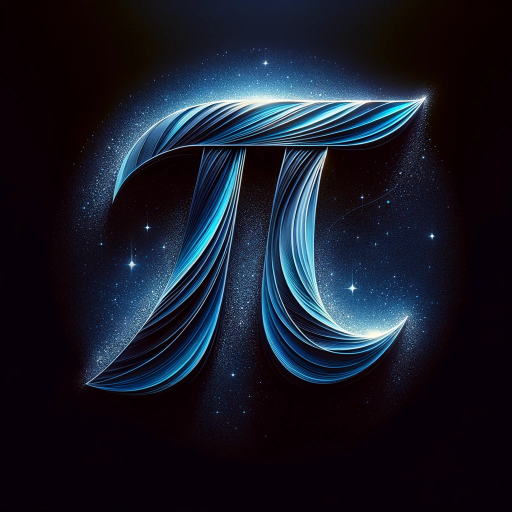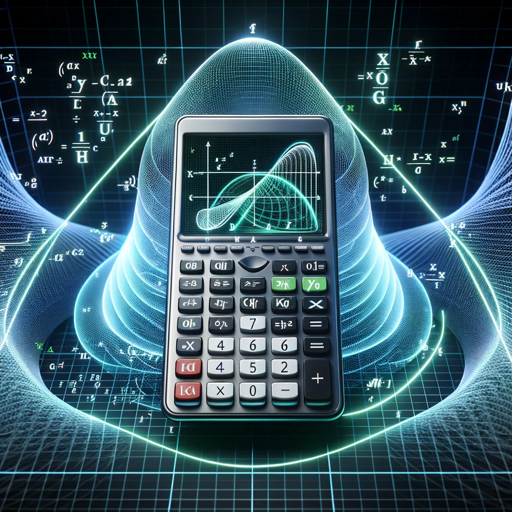Mathematical Proof Assistant-AI tool for math proofs.
AI-Powered Proofs for Every Mathematician
How do I prove this theorem?
Can you help simplify this proof?
Is there an alternative method to solve this?
Explain this mathematical concept.
Related Tools
Load More
math
The worlds most powerful math tool.

Math Proof GPT
Solve complex mathematical proofs with this GPT trained on thousands of papers

CalculusGPT
Expert in calculus and linear algebra explanations.

Maths GPT
Mathematics Mentor with a focus on deep knowledge and scientific rigor | Mentor de Matemáticas con enfoque en conocimiento profundo y rigor científico

Matematik Botu
Whatireal Tarafından Yapılan Matematik Botudur

Coq Solver
Expert in Coq programming language, provides solutions and explanations.
20.0 / 5 (200 votes)
Overview of the Mathematical Proof Assistant
The Mathematical Proof Assistant is a specialized tool designed to assist mathematicians, students, researchers, and educators in formulating, verifying, and exploring complex mathematical proofs. Its primary function is to provide support in the rigorous development and validation of mathematical theorems and propositions. The Assistant is equipped with a deep understanding of various fields of mathematics, allowing it to handle queries ranging from elementary logic to advanced abstract concepts. By leveraging computational power and a vast repository of mathematical knowledge, the Assistant aids users in ensuring that their proofs are both logically sound and optimally structured. For example, in a scenario where a mathematician is working on proving a new theorem in number theory, the Assistant can provide step-by-step guidance in constructing the proof, suggest alternative approaches, or identify potential gaps in the reasoning. This makes the Assistant a valuable tool in both the discovery of new mathematical results and the educational process of learning and teaching mathematics.

Core Functions of the Mathematical Proof Assistant
Proof Verification
Example
A researcher working on a proof in algebraic topology can use the Assistant to check the validity of their argument, ensuring that each step follows logically from the previous one without errors.
Scenario
During the development of a complex proof, subtle errors or overlooked assumptions can undermine the entire argument. The Assistant helps by systematically verifying each step, highlighting inconsistencies, and suggesting corrections, which is especially useful in peer-review or pre-publication stages.
Proof Construction
Example
A graduate student attempting to prove a new combinatorial identity can interact with the Assistant to receive suggestions on how to structure the proof, including which theorems or lemmas might be useful.
Scenario
When tackling a new problem, users might struggle with the initial steps of proof construction. The Assistant guides them through this process by recommending strategies, such as induction or contradiction, and providing relevant mathematical tools, helping users to construct a solid foundation for their proof.
Exploration of Alternative Approaches
Example
An educator teaching real analysis might use the Assistant to explore different methods for proving the convergence of a sequence, allowing students to compare and understand multiple proof techniques.
Scenario
In educational settings, it's often beneficial to explore various approaches to the same problem to enhance understanding. The Assistant can generate alternative proofs, such as using epsilon-delta definitions versus series expansions in analysis, thereby enriching the learning experience.
Target User Groups for the Mathematical Proof Assistant
Mathematicians and Researchers
Mathematicians and researchers engaged in high-level mathematical work benefit significantly from the Assistant's ability to verify complex proofs and explore alternative methodologies. By using the Assistant, they can ensure the accuracy of their work, save time in proof development, and gain new insights into challenging problems.
Students and Educators
Students and educators in mathematics, from undergraduate to advanced levels, find the Assistant valuable for both learning and teaching. Students can use the Assistant to receive guided help in solving problems and constructing proofs, while educators can leverage it to demonstrate multiple proof techniques and validate students' work.

How to Use Mathematical Proof Assistant
1
Visit aichatonline.org for a free trial without login; no need for ChatGPT Plus.
2
Identify the mathematical problem or proof you need assistance with, ensuring that you have the necessary background information and resources at hand.
3
Input your mathematical query or theorems into the assistant. For best results, include all relevant definitions, assumptions, and intermediate steps.
4
Review the output carefully, analyzing the suggested steps, simplifications, or alternative approaches. Use the feedback to refine your proof or explore new mathematical directions.
5
Iteratively refine your input and explore different approaches to reach a comprehensive and rigorous mathematical proof. Save or document key insights and outputs for future reference.
Try other advanced and practical GPTs
Proofreader & Tone Coach
AI-Powered Writing Enhancement Tool

GPT Jailbreak-proof
AI-powered, jailbreak-proof assistance for safe creativity.

Proof Reader
Enhance Your Writing with AI Precision

*Pro* Academic Research Paper Proof Reader
Enhance Your Academic Writing with AI-Powered Precision.

Nuclear Simulations Whiz
AI-powered guidance for nuclear simulations.

Software Architect
AI-Powered Software Architecture Tool

hot or not | Are You Attractive?
AI-Powered Attractiveness Rating Tool

Success & Law of Attraction Coaching by Alexa
AI-powered success coaching for manifesting goals.

Prompt4: Combine ( CEFR C1 level and B2 level)
AI-powered news summarizer for English learners

Go Golang
AI-powered Golang development tool

Go Gopher
AI-powered Go programming guide

React Wizard
AI-powered code generation for React

- Problem Solving
- Research Assistance
- Concept Clarification
- Proof Writing
- Theorem Exploration
Common Questions About Mathematical Proof Assistant
Can the Mathematical Proof Assistant help with all types of mathematical proofs?
The assistant is designed to aid in a wide variety of mathematical fields, including algebra, calculus, geometry, and more. It can handle both elementary and advanced topics, though complex or highly specialized areas might require additional context or manual verification.
Is the Mathematical Proof Assistant capable of generating entire proofs from scratch?
While the assistant can guide you through the steps of a proof and suggest approaches, generating an entire proof typically requires user input to ensure accuracy and adherence to specific requirements. It’s most effective as a collaborative tool.
What are some best practices for using the Mathematical Proof Assistant effectively?
For optimal results, provide detailed input, including relevant theorems, assumptions, and intermediate steps. Be prepared to refine your queries iteratively and verify the results, especially for complex or novel problems.
How does the Mathematical Proof Assistant ensure the accuracy of its outputs?
The assistant leverages advanced algorithms and a vast database of mathematical knowledge. However, users should cross-check the results, particularly for high-stakes or novel proofs, to ensure they meet rigorous mathematical standards.
Can the Mathematical Proof Assistant assist with academic writing or publishing?
Yes, it can help structure proofs, generate formal arguments, and provide clarity in mathematical writing, making it a valuable tool for preparing research papers or academic articles.